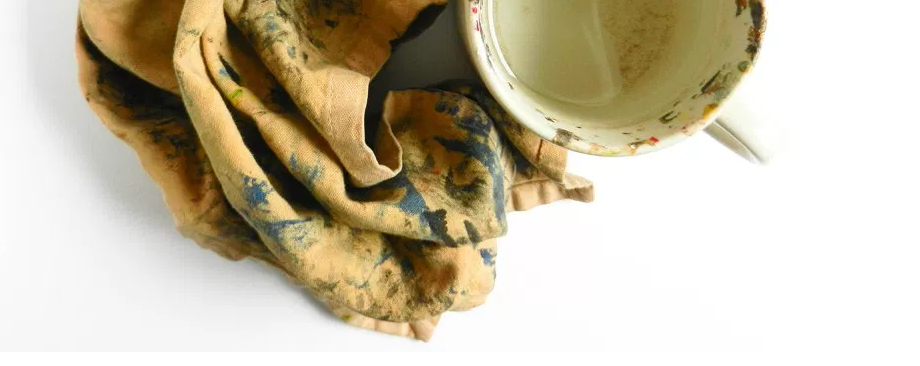Posted by Curry S. on Jan 22nd 2020
A&C Studio Tips: Keeping Things Clean & Green
Artists everywhere are taking steps to lessen their impact on the planet. Here are some tips on how you can help keep the Earth just as beautiful as your art.
Over the years both artists and art supply manufacturers have become increasingly aware of their impact on the environment. With more technologies available and more interest in a new product, making the choice to use environmentally friendly materials in your practice is easier than ever.
From small changes like using LED light bulbs and reusing solvents to larger changes like finding cruelty-free brushes or toxic-free paint substitutes. Artists everywhere are taking steps to lessen their impact on the planet. Here are some tips on how to keep the Earth just as beautiful as your art.
Recycle
"The artist is a special kind of consumer and must take responsibility for their consumption, production, and waste. Analyze your consumption, reduce where possible, offset where it’s not." - John Sabraw

In a recent interview with artist and environmentalist John Sabraw, he taught us a great system for oil painters and recycling brush cleaning solvent. Oil painters can use a three (or more) jar recycling system for brush cleaning solvent:
Use large mason jars with Gamsol, so you can see how much sediment is in each, and the lids are liquid tight. Wipe any excess paint off your brush, wash thoroughly in jar one, then jar two, then jar three. After that, your brushes should be super clean!
When you come back to the studio the next day, the paint you washed off will have separated into paint sludge on the bottom of the jars and clean solvent will be on top, with jar three being nearly free from any paint residue. Eventually, jar one will collect too much paint sludge to use properly. Pour off the clear solvent on top into a new jar – this new jar now becomes jar three and three becomes jar 2 and jar two becomes jar one.
Repeat nearly forever and when the time comes, contact your local waste entity for proper disposal of the paint sludge in the bottom of the jar and then reuse or recycle the glass jar.
You can also recycle old acrylic paintings by applying a new gesso ground and using them for studies. Save money and the environment? Count us in.
Purchase Environmentally Sustainable Art Products

Purchase items made from sustainable materials; you might be surprised how many you find! Some of our favorites include:
Raphael Kevrin+ Synthetic Mongoose Brushes:
These brushes are made from a blend of several natural hairs and synthetic fibers to create the perfect imitation mongoose hairbrush, outperforming a real mongoose brush! And it's legal!
The Masters Brush Cleaner works on most acrylics, and watercolors. Even old, hardened oil paint brushes can be restored to their original snap and luster! It gives off no harmful fumes or odors, contains no harsh chemicals, and it's safe for use in the classroom or studio.
Gamblin Linseed & Safflower Oils:
Not only are both of these vegetable oils completely non-toxic, but they are also both used in moisturizers, cooking oils, food, and vitamins.
Fredrix Standard Stretcher Bars:
Fredrix products are made using the finest natural materials sourced from environmentally responsible companies. One of the most prolific being Sierra Pacific Industries (SPI). These stretcher bars, for example, feature high quality, SPI lumber that resists warping and cracking.
This easel is made from a renewable Lyptus Wood. A premium grade hardwood grown on highly productive, environmentally friendly plantations in South America.
Strathmore Spiral Bound Windpower Sketch Pads:
These pads are made with 100% wind power - a pollution free, renewable energy resource.
Shed Some Light on the Situation

While natural light is the obvious front-runner in environmentally friendly lighting, we can't always rely on mother nature to cooperate with our artistic schedules. Making sure your studio is properly lit with energy efficient light bulbs is the next best thing. Halogen bulbs, compact fluorescent lamps, and LEDs are a longer running and brighter alternative all while using less energy.
When in Doubt, Don't Just Dump It Out!

The United States Environmental Protection Agency, state agencies, and local authorities all have regulations affecting such disposal. Questions are best addressed to the local facility first, such as the landfill or water treatment plant. Questions about whether a material is considered a "hazardous waste" and the best method for its disposal, can also be directed to the manufacturer. Have a question about disposing of something you purchased from us? You can always email us at [email protected]!
Waste Not, Want Not
Make sure you’re purchasing products in the optimal container size. If you don’t buy enough, you’ll be adding to packaging waste. If you buy too much the product could expire. To avoid this, make sure you’re storing your products in ways that will maximize shelf life and cut down on waste. If you find yourself in a position where you no longer need the product, look into giving it away. A quick Google search will bring up plenty of options for organizations looking for artist material donations.

